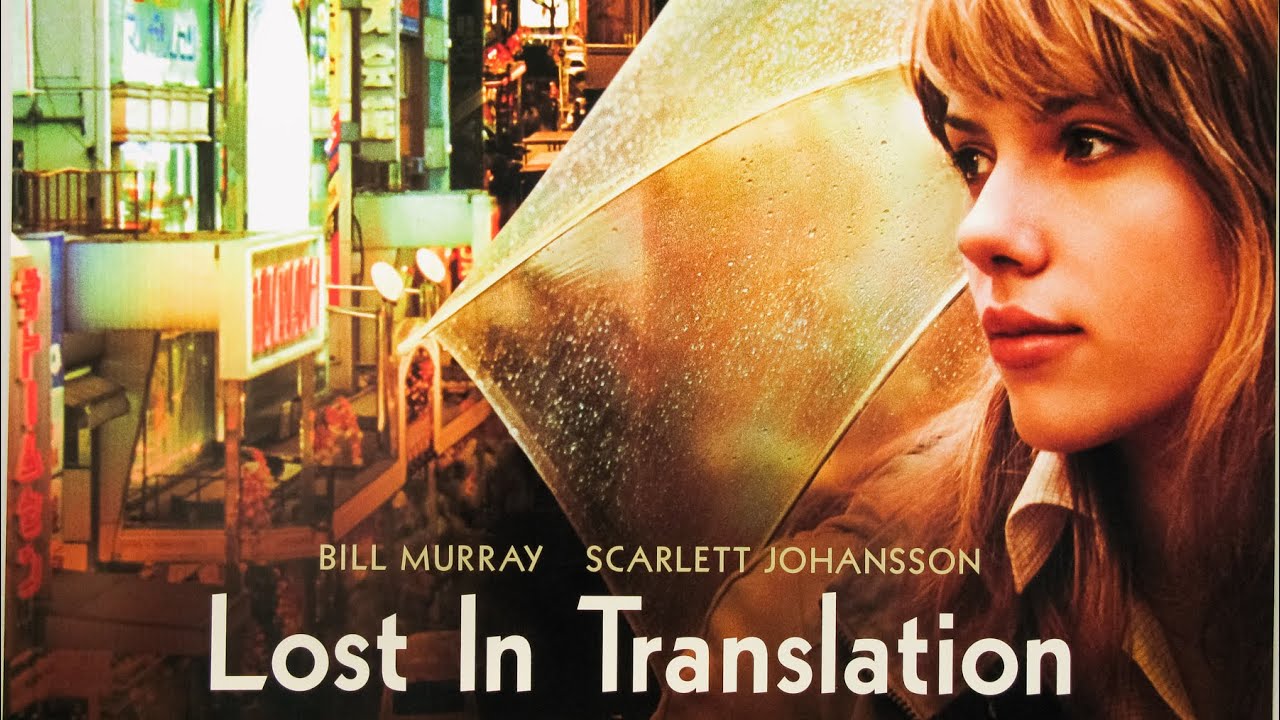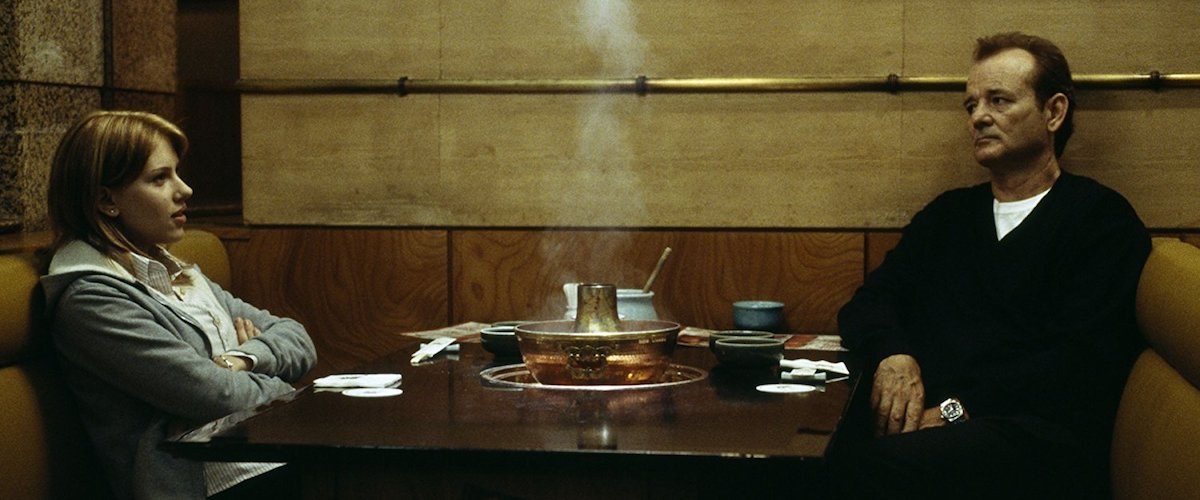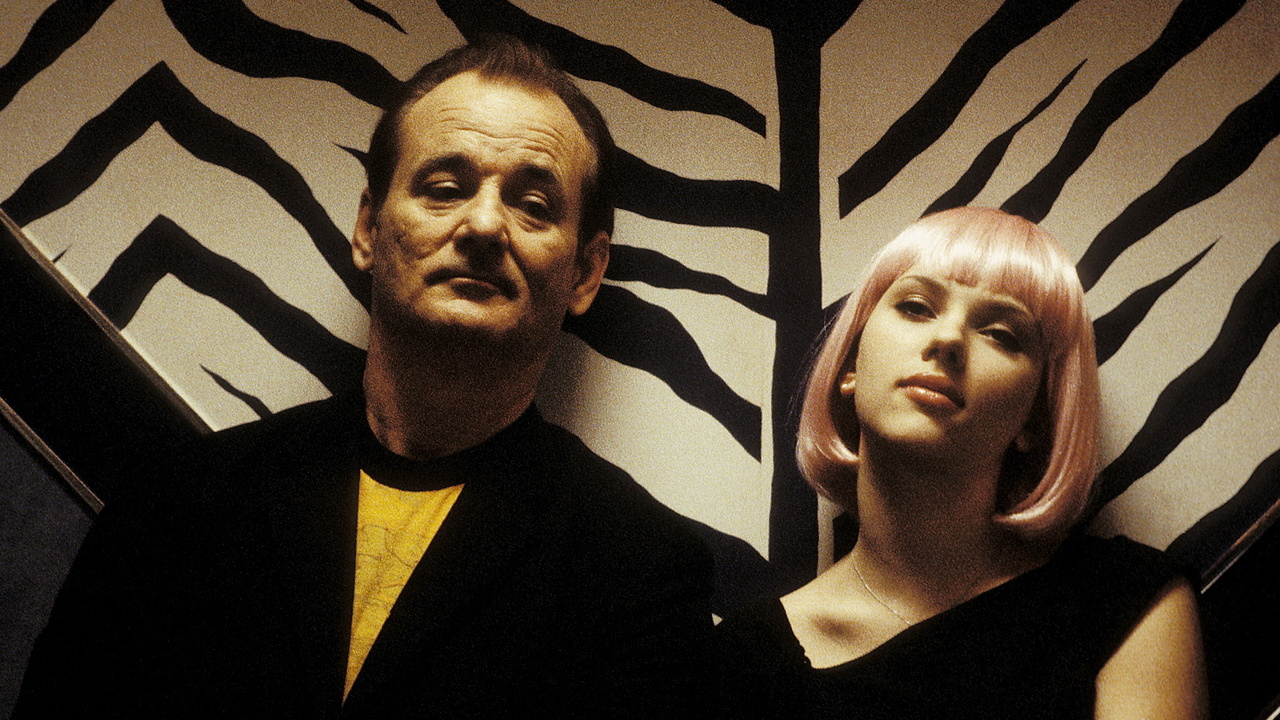Lost in translation (2003)

“Lost in Translation” is a 2003 comedy-drama film written and directed by Sofia Coppola. It is her second feature film, following “The Virgin Suicides,” and stars Bill Murray, Scarlett Johansson, and Giovanni Ribisi. Set in the vibrant, yet isolating, city of Tokyo, the film explores themes of loneliness, cultural dislocation, and the unexpected connections that can form between two people from different worlds. Through its subtle storytelling and emotional depth, “Lost in Translation” has become a critically acclaimed and beloved film.
The central characters are Bob Harris, played by Bill Murray, and Charlotte, portrayed by Scarlett Johansson. Bob is a middle-aged American actor who is in Tokyo to film a whiskey commercial. Feeling disconnected from his life and struggling with a sense of purposelessness, he finds himself adrift in the unfamiliar city. Charlotte, a young woman who accompanies her husband on a business trip, is also struggling with feelings of isolation and uncertainty about her future. Both characters, though separated by age and experience, find common ground in their shared sense of loneliness.
The film is a beautiful exploration of the bond that develops between Bob and Charlotte. Their relationship is not romantic, but rather one of mutual understanding and emotional support. As they navigate the alienating culture of Tokyo, they form a deep connection that provides comfort in their otherwise empty lives. Bill Murray’s performance as Bob is subtle yet profound, capturing the character’s melancholy and existential crisis. Scarlett Johansson’s portrayal of Charlotte is equally compelling, conveying a young woman at a crossroads in her life, searching for meaning and direction.

Tokyo itself plays a significant role in the film, acting almost as a character in its own right. The city’s bustling streets, neon lights, and language barrier serve as a backdrop to the personal journeys of Bob and Charlotte. The contrast between the vibrant energy of Tokyo and the inner isolation of the characters creates a unique atmosphere throughout the film. Coppola’s direction captures the sense of being lost in an unfamiliar place, both physically and emotionally, and the way that distance can sometimes lead to unexpected intimacy.

The cinematography of “Lost in Translation” is another standout aspect of the film. The camera lingers on moments of stillness, allowing the audience to fully experience the characters’ emotions. The use of soft lighting and wide shots of Tokyo creates a dreamlike quality, enhancing the sense of disconnection that both Bob and Charlotte feel. The film’s pacing is deliberate, allowing the subtle nuances of the characters’ interactions to unfold naturally without rushing toward a traditional resolution.

In conclusion, “Lost in Translation” is a poignant and introspective film that delves into the complexities of human connection, identity, and the search for meaning in life. Through its masterful direction, remarkable performances, and evocative atmosphere, the film resonates with audiences on a deeply emotional level. It reminds us that even in the most unfamiliar and isolating circumstances, moments of genuine connection can offer a sense of belonging and understanding. The film’s quiet yet powerful exploration of loneliness and companionship has made it a modern classic in cinematic storytelling.











